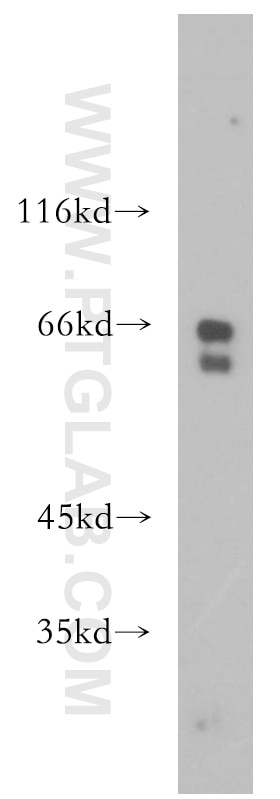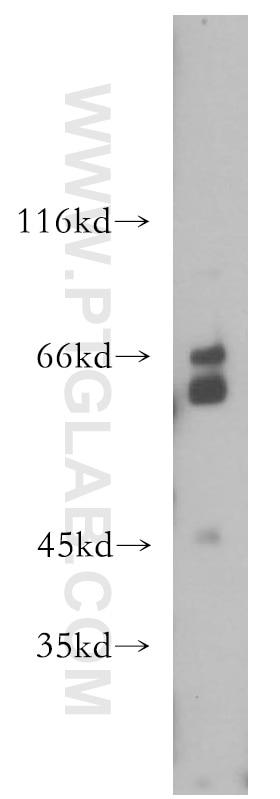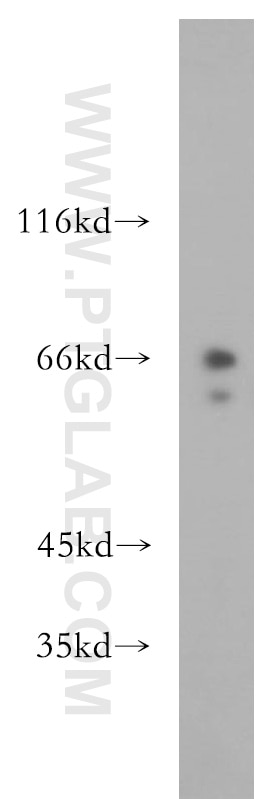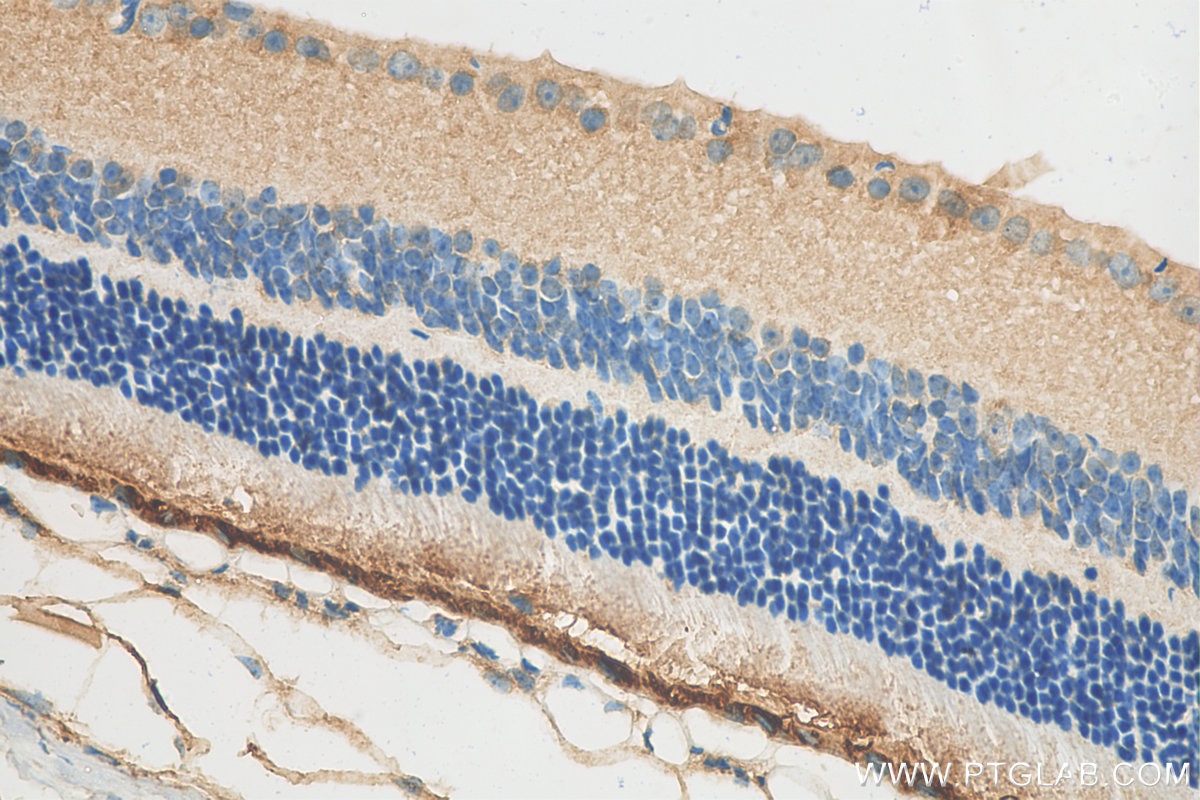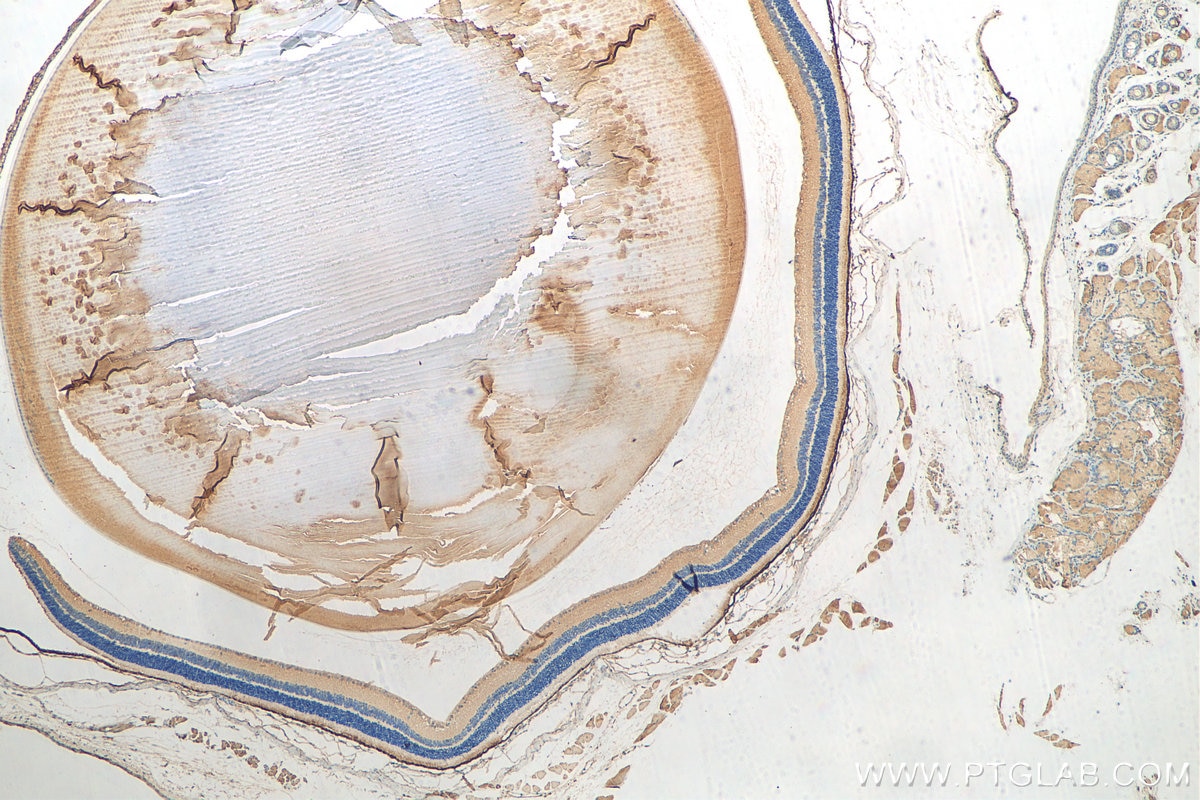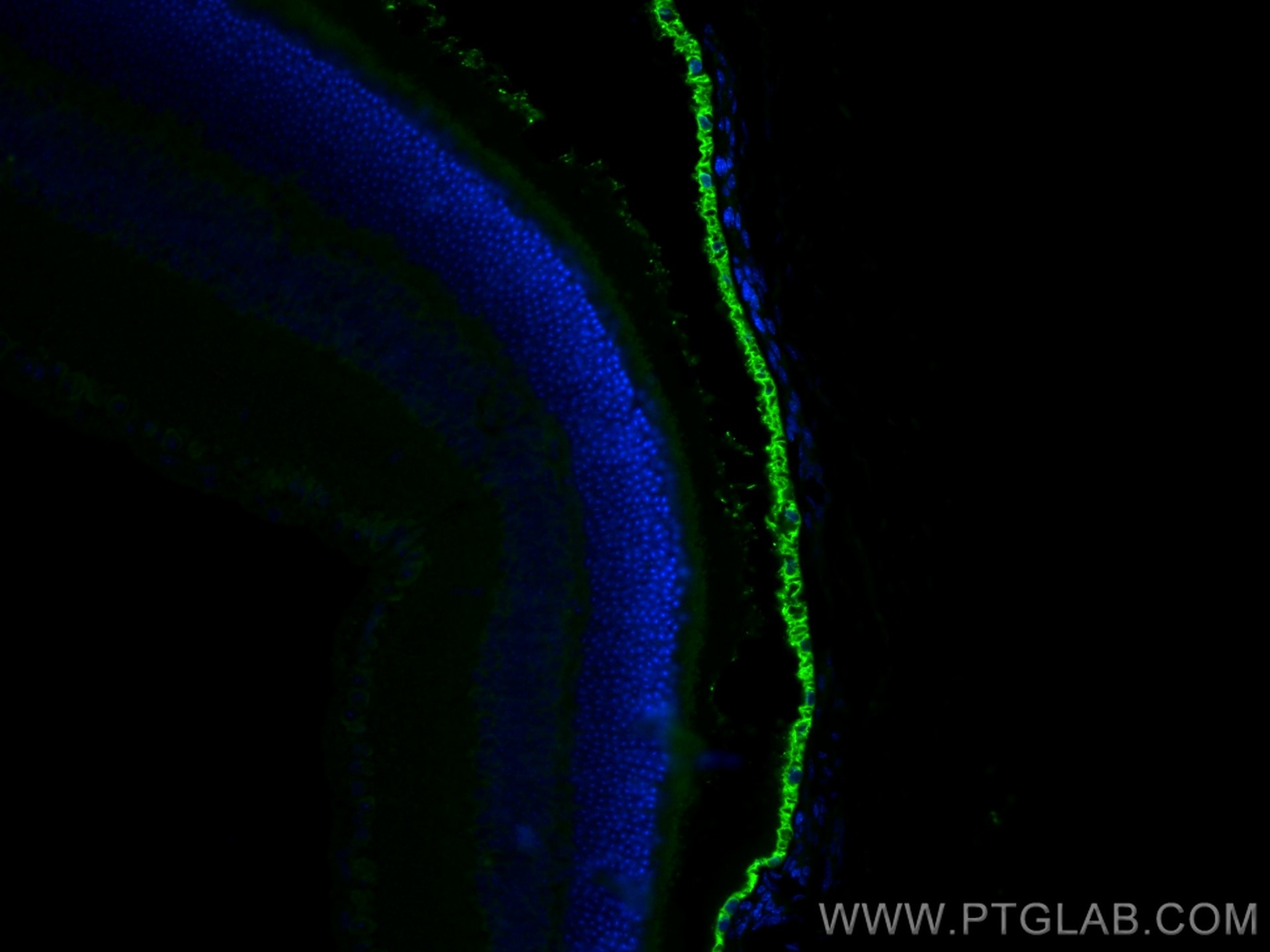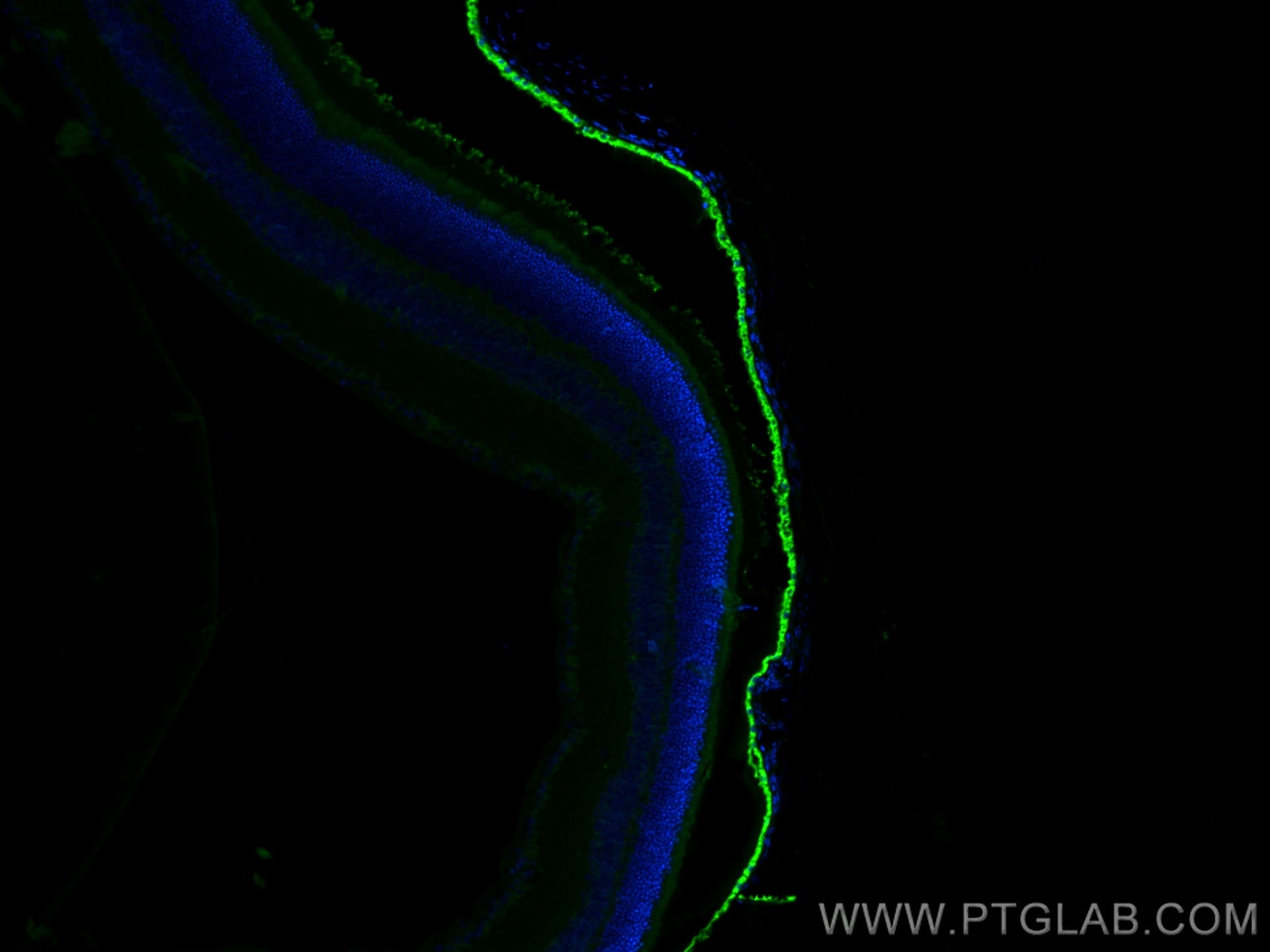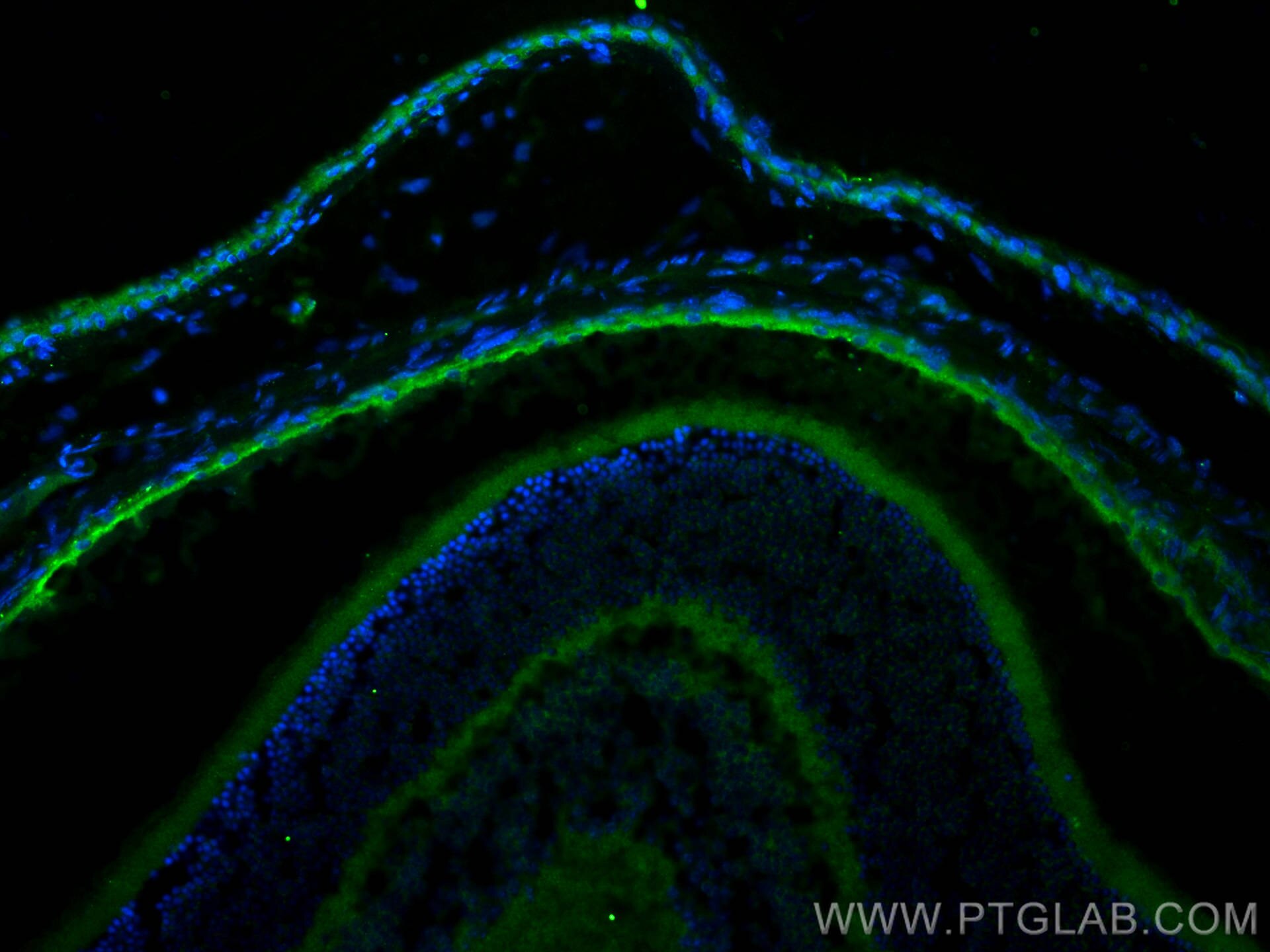- Phare
- Validé par KD/KO
Anticorps Polyclonal de lapin anti-RPE65
RPE65 Polyclonal Antibody for WB, IHC, IF-P, IF-Fro, ELISA
Hôte / Isotype
Lapin / IgG
Réactivité testée
Humain, rat, souris et plus (1)
Applications
WB, IHC, IF-P, IF-Fro, ELISA
Conjugaison
Non conjugué
N° de cat : 17939-1-AP
Synonymes
Galerie de données de validation
Applications testées
| Résultats positifs en WB | cellules Y79, cellules HeLa, cellules PC-3 |
| Résultats positifs en IHC | tissu oculaire de souris, il est suggéré de démasquer l'antigène avec un tampon de TE buffer pH 9.0; (*) À défaut, 'le démasquage de l'antigène peut être 'effectué avec un tampon citrate pH 6,0. |
| Résultats positifs en IF-P | tissu oculaire de souris, |
| Résultats positifs en IF-Fro | tissu oculaire de souris, |
Dilution recommandée
| Application | Dilution |
|---|---|
| Western Blot (WB) | WB : 1:500-1:3000 |
| Immunohistochimie (IHC) | IHC : 1:50-1:500 |
| Immunofluorescence (IF)-P | IF-P : 1:50-1:500 |
| Immunofluorescence (IF)-FRO | IF-FRO : 1:50-1:500 |
| It is recommended that this reagent should be titrated in each testing system to obtain optimal results. | |
| Sample-dependent, check data in validation data gallery | |
Applications publiées
| KD/KO | See 1 publications below |
| WB | See 9 publications below |
| IHC | See 1 publications below |
| IF | See 8 publications below |
Informations sur le produit
17939-1-AP cible RPE65 dans les applications de WB, IHC, IF-P, IF-Fro, ELISA et montre une réactivité avec des échantillons Humain, rat, souris
| Réactivité | Humain, rat, souris |
| Réactivité citée | rat, Humain, poisson-zèbre, souris |
| Hôte / Isotype | Lapin / IgG |
| Clonalité | Polyclonal |
| Type | Anticorps |
| Immunogène | RPE65 Protéine recombinante Ag12356 |
| Nom complet | retinal pigment epithelium-specific protein 65kDa |
| Masse moléculaire calculée | 61 kDa |
| Poids moléculaire observé | 65 kDa, 61 kDa |
| Numéro d’acquisition GenBank | BC075036 |
| Symbole du gène | RPE65 |
| Identification du gène (NCBI) | 6121 |
| Conjugaison | Non conjugué |
| Forme | Liquide |
| Méthode de purification | Purification par affinité contre l'antigène |
| Tampon de stockage | PBS with 0.02% sodium azide and 50% glycerol |
| Conditions de stockage | Stocker à -20°C. Stable pendant un an après l'expédition. L'aliquotage n'est pas nécessaire pour le stockage à -20oC Les 20ul contiennent 0,1% de BSA. |
Informations générales
RPE65(Retinal pigment epithelium-specific 65 kDa protein) is also named as retinoid isomerohydrolase with the calculated molecular weight og 61 kDa and belongs to the carotenoid oxygenase family. It is a microsomal protein with isomerase activity in the retinoid visual cycle that playing a role in the isomerisation of all-trans (vitamin A) to 11-cis retinal, the chromophore of the visual pigments. It also might be involved in retinoid uptake of keratinocytes.
Protocole
| Product Specific Protocols | |
|---|---|
| WB protocol for RPE65 antibody 17939-1-AP | Download protocol |
| IHC protocol for RPE65 antibody 17939-1-AP | Download protocol |
| IF protocol for RPE65 antibody 17939-1-AP | Download protocol |
| Standard Protocols | |
|---|---|
| Click here to view our Standard Protocols |
Publications
| Species | Application | Title |
|---|---|---|
Redox Biol Glia maturation factor-β induces ferroptosis by impairing chaperone-mediated autophagic degradation of ACSL4 in early diabetic retinopathy. | ||
J Biol Chem Conversion of all-trans-retinal into all-trans-retinal dimer reflects an alternative metabolic/antidotal pathway of all-trans-retinal in the retina. | ||
Invest Ophthalmol Vis Sci Dasatinib Plus Quercetin Alleviates Choroid Neovascularization by Reducing the Cellular Senescence Burden in the RPE-Choroid | ||
Diabetes Res Clin Pract Thioredoxin upregulation delays diabetes-induced photoreceptor cell degeneration via AMPK-mediated autophagy and exosome secretion. | ||
Avis
The reviews below have been submitted by verified Proteintech customers who received an incentive for providing their feedback.
FH Alessandro (Verified Customer) (11-06-2022) | no unspecific staining, great outcome
|
